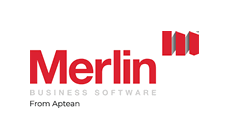Meaning of “new and unused” clarified for CAs purposes
The guidance on what “new and unused” means for the purposes of first-year allowances has been updated in order to make things clearer. What’s the full story?

The guidance on what “new and unused” means for the purposes of first-year allowances has been updated in order to make things clearer. What’s the full story?
HMRC’s guidance has been updated to make the capital allowances rules on qualifying expenditure for first-year allowances (FYAs) clearer.
The 100% FYA for main rate expenditure (full expensing) and the 50% FYA for special rate expenditure can only be used if the plant and machinery is new and unused. The guidance has now been updated to clarify that:
- where expenditure is incurred on upgrading or improving an existing asset by adding new parts, the expenditure may qualify for full expensing/the 50% FYA
- where new and unused parts are combined with used or second-hand parts to create a new asset, only the expenditure incurred on the new and unused parts may qualify for full expensing/the 50% FYA; and
- where something new has been made from recycled materials, the new asset will be unused and not second hand for the purposes of full expensing/the 50% FYA.
It may be prudent to revisit expenditure from previous years to check whether FYAs should have been claimed.
Related Topics
-
Government rushes through NI cap on pension salary sacrifice
The government has already drafted legislation to impose a £2,000 limit on NI exempt pension contributions under salary sacrifice arrangements. What else do we know?
-
Sneaky change is a blow for side hustles
With most of the media focused on the headline-grabbing announcements from the Budget, a read of the published small print reveals another change coming in 2029. It’s bad news if you are an employee with a side hustle, but what’s going on?
-
Dodging the 2027 IHT and pension changes
In a little over a year the inheritance tax (IHT) exemption for unused pension savings comes to an end. If you’re married or in a civil partnership, one simple step might save your estate thousands in IHT. What is it?







 This website uses both its own and third-party cookies to analyze our services and navigation on our website in order to improve its contents (analytical purposes: measure visits and sources of web traffic). The legal basis is the consent of the user, except in the case of basic cookies, which are essential to navigate this website.
This website uses both its own and third-party cookies to analyze our services and navigation on our website in order to improve its contents (analytical purposes: measure visits and sources of web traffic). The legal basis is the consent of the user, except in the case of basic cookies, which are essential to navigate this website.